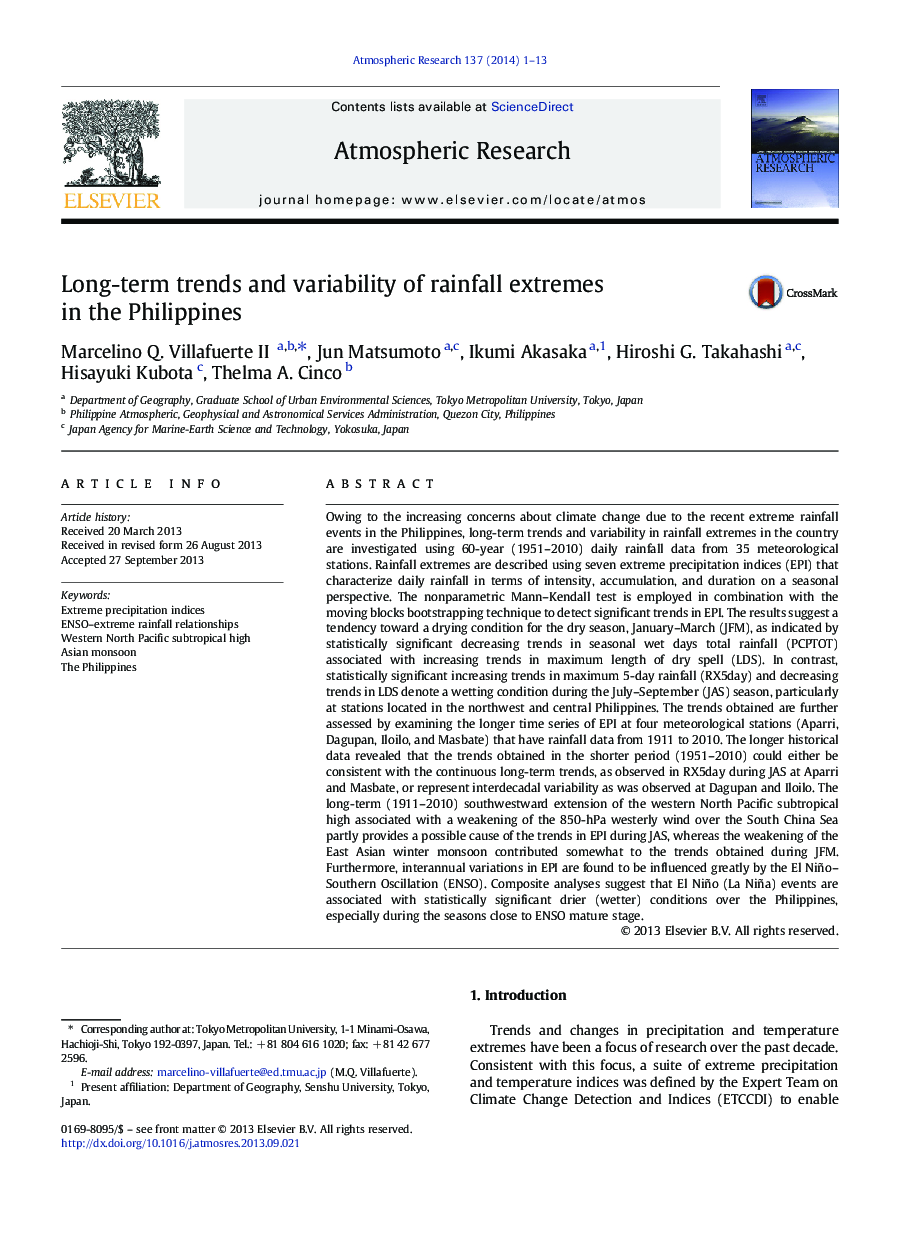| کد مقاله | کد نشریه | سال انتشار | مقاله انگلیسی | نسخه تمام متن |
|---|---|---|---|---|
| 4449926 | 1620533 | 2014 | 13 صفحه PDF | دانلود رایگان |
• Trends and variability in extreme precipitation indices (EPI) in the Philippines are investigated.
• Trends in EPI denote wetting (drying) tendency during wet (dry) season.
• Century-long rainfall data reveal interdecadal variations in EPI at some stations.
• The western North Pacific subtropical high is extending southwestward since 1911.
• Interannual variations in EPI are ENSO-modulated.
Owing to the increasing concerns about climate change due to the recent extreme rainfall events in the Philippines, long-term trends and variability in rainfall extremes in the country are investigated using 60-year (1951–2010) daily rainfall data from 35 meteorological stations. Rainfall extremes are described using seven extreme precipitation indices (EPI) that characterize daily rainfall in terms of intensity, accumulation, and duration on a seasonal perspective. The nonparametric Mann–Kendall test is employed in combination with the moving blocks bootstrapping technique to detect significant trends in EPI. The results suggest a tendency toward a drying condition for the dry season, January–March (JFM), as indicated by statistically significant decreasing trends in seasonal wet days total rainfall (PCPTOT) associated with increasing trends in maximum length of dry spell (LDS). In contrast, statistically significant increasing trends in maximum 5-day rainfall (RX5day) and decreasing trends in LDS denote a wetting condition during the July–September (JAS) season, particularly at stations located in the northwest and central Philippines. The trends obtained are further assessed by examining the longer time series of EPI at four meteorological stations (Aparri, Dagupan, Iloilo, and Masbate) that have rainfall data from 1911 to 2010. The longer historical data revealed that the trends obtained in the shorter period (1951–2010) could either be consistent with the continuous long-term trends, as observed in RX5day during JAS at Aparri and Masbate, or represent interdecadal variability as was observed at Dagupan and Iloilo. The long-term (1911–2010) southwestward extension of the western North Pacific subtropical high associated with a weakening of the 850-hPa westerly wind over the South China Sea partly provides a possible cause of the trends in EPI during JAS, whereas the weakening of the East Asian winter monsoon contributed somewhat to the trends obtained during JFM. Furthermore, interannual variations in EPI are found to be influenced greatly by the El Niño–Southern Oscillation (ENSO). Composite analyses suggest that El Niño (La Niña) events are associated with statistically significant drier (wetter) conditions over the Philippines, especially during the seasons close to ENSO mature stage.
Journal: Atmospheric Research - Volume 137, February 2014, Pages 1–13
